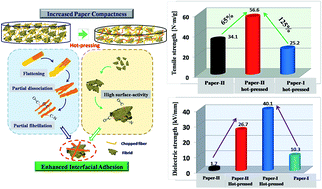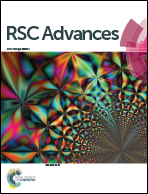Toward high-performance poly(para-phenylene terephthalamide) (PPTA)-based composite paper via hot-pressing: the key role of partial fibrillation and surface activation
Abstract
The inert surface of para-aramid fibers makes para-aramid fiber-based composites suffer from a poor interfacial interaction and limited physical properties. In this work, the influence of hot-pressing on paper structural properties was explored. Without hot-pressing, in comparison with the fibrid paper (Paper-I), the addition of para-aramid chopped-fiber obviously enhanced mechanical properties, but led to slight damage of the dielectric properties of the fiber/fibrid paper (Paper-II) because of voids and defects. After hot-pressing, it was noteworthy that the increased mechanical properties and dielectric properties of the papers were mainly due to the individual pressing treatment and independent of the individual heating treatment. Interestingly, the combined treatment of heating and pressing shows a synergistic effect and results in an increase of paper compactness especially for Paper-II. Meanwhile, the interfacial interaction between different fibers in the composite papers was greatly improved, which is mainly associated with the partial dissociation into a fibrillar structure and the improved surface activation of para-aramid chopped fibers. Therefore, fiber micro-fibrillation is highly effective for improving internal bonding and optimizing physical properties for para-aramid-based composite papers.



 Please wait while we load your content...
Please wait while we load your content...